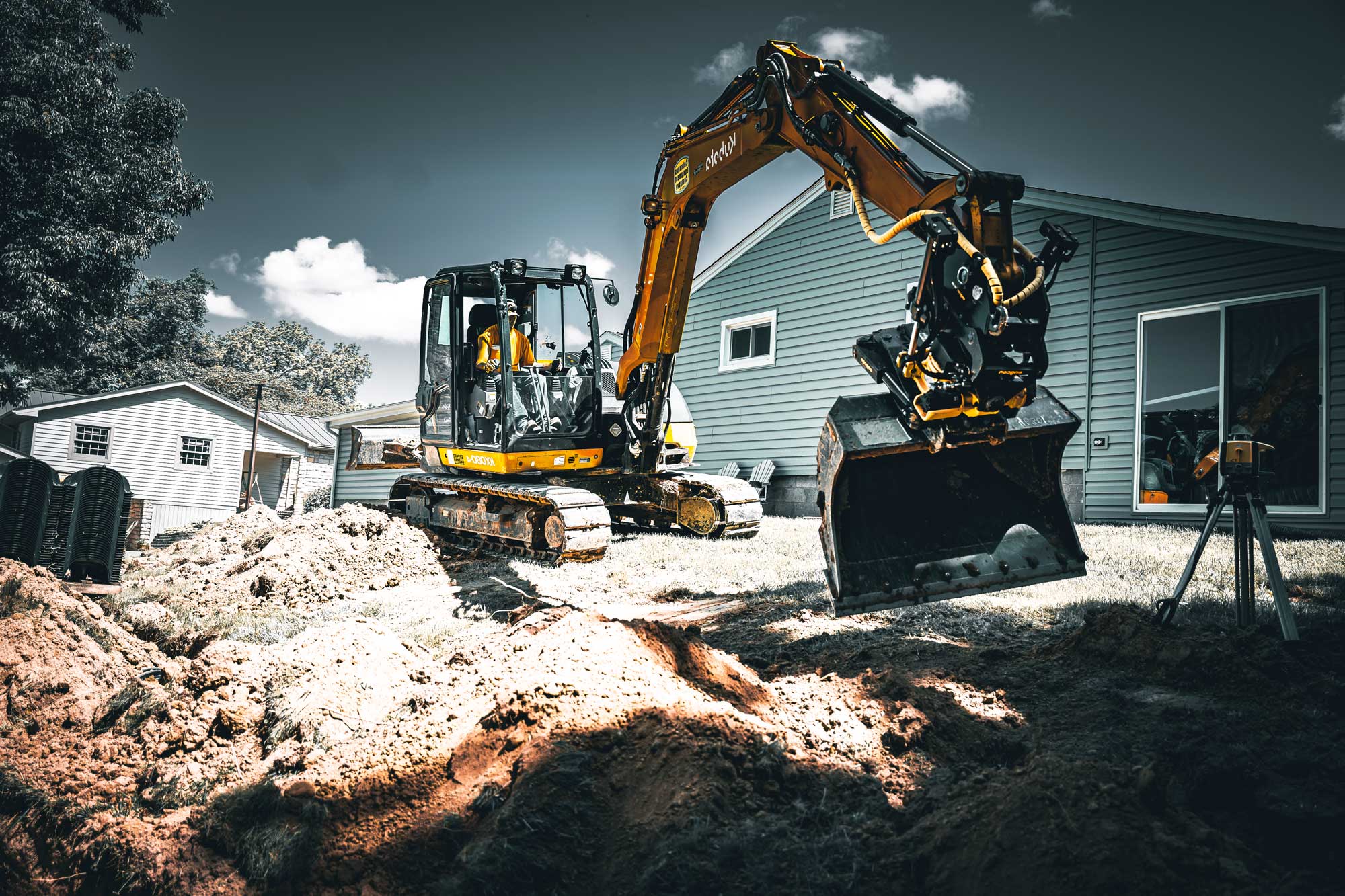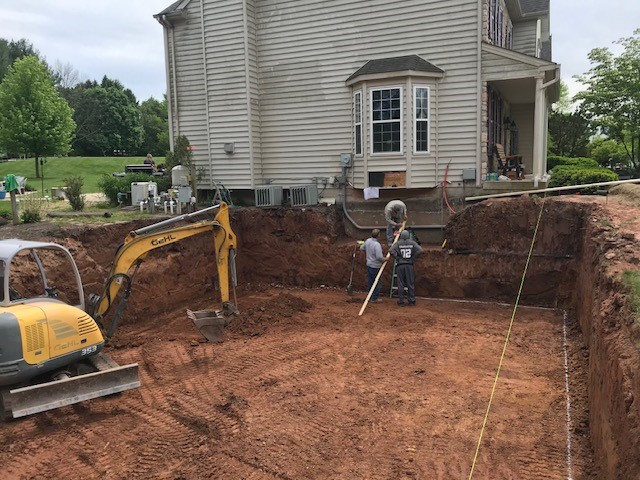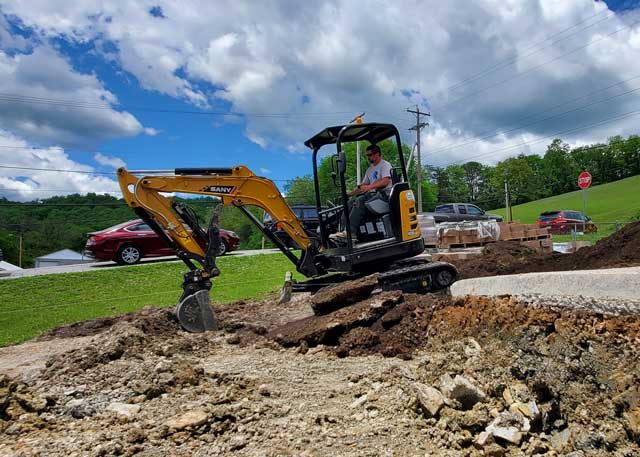Comprehensive Exploration: The Scientific Research Behind Superior Excavation Practices
The realm of excavation techniques is a domain where scientific research links with workmanship to uncover the mysteries hidden beneath the earth's surface area. From ancient hand devices to modern-day hydraulic excavators, the evolution of excavation techniques has actually been a testimony to human resourcefulness and technical improvements. However, what truly sets remarkable excavation techniques apart is a deep understanding of geological concepts, paired with the application of cutting-edge devices and approaches. By discovering the scientific research behind these practices, we can uncover the tricks that lie beneath our feet and value the accuracy and knowledge that enter into every dig.
Advancement of Excavation Methods
Throughout background, the evolution of excavation techniques has actually played a vital function in advancing building and construction practices and archaeological explorations. From the simple tools made use of by our ancestors to the innovative machinery employed in modern-day times, the progression of excavation approaches has significantly changed how we come close to numerous tasks.
In ancient times, hand-operated labor with basic devices such as wheelbarrows, shovels, and pickaxes was the primary approach of excavation. This labor-intensive procedure limited the deepness and range of excavations, commonly resulting in sluggish progression and limited accessibility to particular sites. As civilizations progressed, so did the techniques and tools used for excavation.
The Industrial Change noted a turning factor in excavation practices with the intro of steam-powered equipment. In modern times, modern technology plays a critical function in excavation, with improvements like General practitioner systems, drones, and 3D scanning boosting accuracy and performance in the area.
Duty of Innovation in Excavation

The assimilation of innovative technology has basically transformed the area of excavation, boosting precision and performance to unprecedented degrees - lancaster excavation. One of the crucial technological improvements that has dramatically impacted excavation methods is the utilization of GPS systems.
In addition, the advent of 3D modeling and simulation software application has structured the planning process for excavation tasks. Drivers and designers can currently picture the whole excavation process before beginning, maximizing and identifying prospective difficulties operations. In conjunction with this, the implementation of drones in excavation activities has helped with airborne surveys, volumetric dimensions, and website inspections with unparalleled speed and accuracy.
Geological Concepts in Excavation
An understanding of geological principles is important for ensuring the architectural integrity and security of excavation websites. Geological variables play a vital duty in establishing the feasibility and safety and security of excavation tasks (lancaster trenching). One vital geological concept to consider is the kind of dirt or rock existing at the website. Various dirt kinds, such as clay, sand, or crushed rock, have differing degrees of security and need different excavation methods. Natural dirts like clay may need additional support to prevent collapses, while sandy dirts may be prone to disintegration throughout excavation.
By performing complete geological surveys and evaluation, excavators and designers can develop techniques to alleviate risks and make certain the successful completion of excavation jobs. Eventually, including geological principles right into excavation methods is critical for achieving risk-free, effective, and lasting outcomes.

Most Recent Devices for Excavation
In the world of excavation methods, modern advancements in devices have transformed the effectiveness and precision additional reading of excavation processes. One of the most up to date tools making waves in the sector is making use of drones furnished with sophisticated imaging innovation. These drones can supply in-depth airborne studies of excavation sites, providing real-time data on topography and possible threats. This info aids in better planning and decision-making throughout the excavation procedure.
Another cutting-edge device getting popularity is the execution of 3D printing innovation for creating personalized excavation devices. This enables for the production of specialized devices that are tailored to the details requirements of a task, enhancing performance and minimizing downtime.
Additionally, advancements in products science have actually led to the advancement of more powerful and much more sturdy excavation devices. excavating ohio. Tungsten carbide-tipped excavator add-ons, for webpage instance, deal superior performance in tough ground problems, boosting performance on-site
Science's Effect on Excavation Practices

In addition, clinical research on soil mechanics and geotechnical engineering has actually offered important insights into soil habits, allowing excavation experts to make educated decisions pertaining to excavation approaches and soil stablizing techniques. Overall, science proceeds to drive advancement and enhancement in excavation techniques, making excavation tasks a lot more reliable, affordable, and lasting.

Final Thought
To conclude, the evolution of excavation strategies has actually been considerably influenced by advancements in modern technology and a much deeper understanding of geological principles. The most current tools and equipment made use of in excavation have improved performance and accuracy in the field. The application of clinical understanding has actually substantially improved excavation practices, bring about a lot more efficient and lasting approaches for excavating different sorts of products.
In the world of excavation methods, contemporary developments in tools have actually changed the performance and accuracy of excavation processes. By leveraging scientific concepts, the excavation market has been able to considerably improve performance, precision, and safety in excavation processes. GPR permits excavation groups to non-invasively scan and map subsurface frameworks, energies, and potential hazards, allowing them to prepare excavation projects with greater precision and minimized risk of accidents.
In addition, scientific study on dirt mechanics and geotechnical design has given valuable understandings into dirt actions, permitting excavation experts to make informed choices concerning excavation approaches and dirt stabilization methods. In general, scientific research continues to drive innovation and renovation in excavation practices, making excavation tasks much more effective, affordable, and lasting.